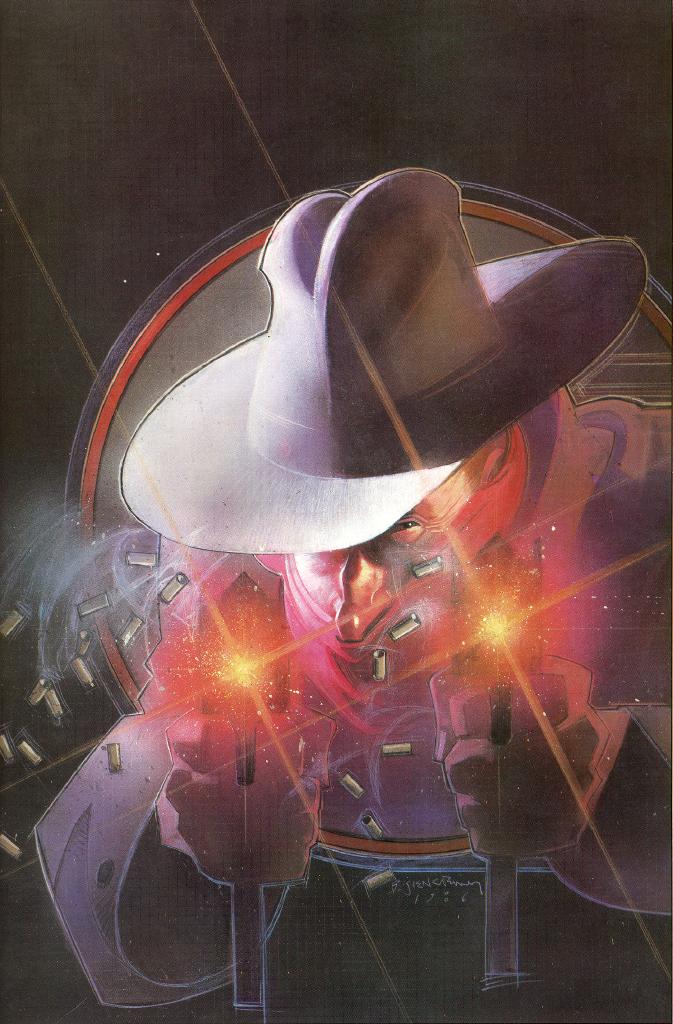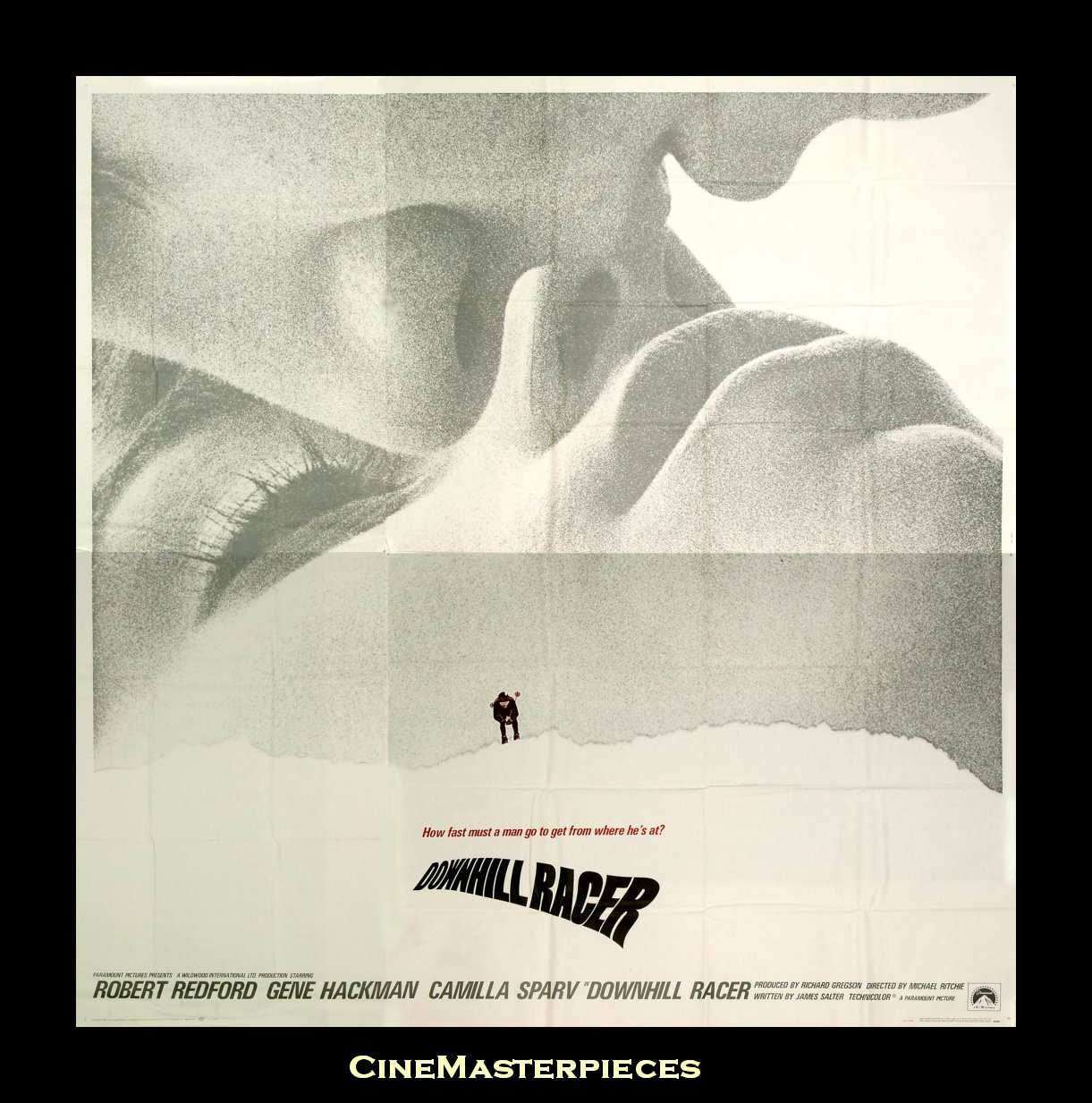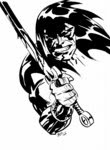The difficulty of dialogue. Normal everyday speech, the type most of us speak, the type we hear from the majority of our friends and colleagues, is rife with pauses, non-sequiters, endless repetitions and dangling sentences. We struggle to articulate even the simplest of concepts in conversation, we trail off, stutter, mis-pronounce words and lose our trains of thought. But mostly we utter little verbal tics, on constant rotation : "I mean", "Its like", "You know", "the thing is", "yeah?". Somebody I know says "Yeah" repeatedly when anybody talks to her. "Yeahyeahyeahyeah, aw yeah, yeah, yeah, yeahyeahyeah". Its a signifier, it shows she listening, taking everything in, comprehending it all. But it also indicates her desire to reply, its her way of reserving the next spot in the conversation for herself. When you're finished, its my turn, shes saying.
All of this, of course, is a problem for a dramatist. I discussed David Mamet's hyper-realistic dialogue in a post a few months ago, and Mamet uses repetition in his own unique way. But it doesn't really have all that much to do with the way people actually talk. The way we communicate in bars and offices and living rooms. Nor does the dialogue in your average British tv soap opera. "Coronation Street" or "Eastenders" may get the dialect right, and the characters generally sound passable, but they speak more concisely and engagingly than most real people do. They are far too to the point, without the endless rambling, avoidance and subtleties of real conversation. Is real speech, the actual realtime banality of a normal conversation, which mixes pleasantries with smalltalk and some exchange of information, is this too boring to be reproduced in art? Major dramatists adopt some aspect of it and amplify - Mamet with his rhythmic schemes and repetition, Pinter with his legendary silences - but the actual casual flow of a real conversation is devilishly tricky to reproduce.

In 1999, Peter Mehlman, a former executive producer and co-writer on Seinfeld, created a new sitcom for ABC. Its title at least sought to reflect the inanities of everyday speech. It was called "Its Like , You Know.." and it was obviously intended to cater to fans of "Seinfeld" and/or "Friends", focusing as it did on a group of friends in Los Angeles, most of them at least tangentally involved with the movie business. It did not remotely fulfil the promise of that title, however, its characters being a parade of sharp-tongued wits, ever ready with a quip or one-liner, rarely troubled by inarticulacy. It was full of vaguely familiar actors, from the awesome Chris Eigeman (star of Whit Stillman's films) as the transposed New Yorker to Evan Handler (who has been in nearly every contemporary show I can think of, from "Sex & the City" to "Lost", "the West Wing" and "CSI") and Jennifer Grey. The show is probably most memorable for its use of Grey, who played and mocked herself with constant references to the recent nose-job which had made her unrecognisable as the girl from "Dirty Dancing", shots at ex-boyfriends and a running joke about her need for recognition. Obituaries seeking to account for the failure of "Its Like, You Know.." - it lasted barely two full seasons and is unavailable on DVD - generally blame the awfulness of that title, which massively misrepresented the show, but more crucially, wasn't the kind of thing that made anybody actually want to watch it.
But then the two era-defining sitcoms it sought to emulate were both of the hyper-articulate, perfectly timed one-liner vintage. "Friends" and "Seinfeld", while vastly different shows in philosophy and tone, both rely to a great extent on the wit of their ridiculously witty characters for much of their humour. Recent British comedy, where the "mockumentary" form has become so prevalent, is necessarily more realist in its approach to dialogue. Indeed, the work of Ricky Gervais and Stephen Merchant makes use of the pause and the guileless repetition as well as any tv comedy ever has. But, the American version of "The Office" aside, this has not been copied across the Atlantic. "Curb Your Enthusiasm", which is basically the bastard child of "Seinfeld", is largely improvised, accounting for the authentic edge the dialogue generally possesses. American televison drama is full of brilliantly, expertly written material, meaning that little of it makes any effort to replicate real speech. From the extended jargon-filled verbal riffs of "The West Wing" and "E.R." through the baroque, archaic beauty of "Deadwood"'s saloon encounters to the different forms of street poetry evident in "The Wire" and "The Sopranos", the protagonists of the big American televison dramas are all articulate and blessed with distinctive, fascinating verbal patterns. I have no problem with this - it is more rewarding to listen to clever, funny, interesting dialogue than mumblings and pauses. Most of the time.
If there is a place where those mumblings and pauses are apt, its in the Slacker film. Films about Generation X, Generation Y, or whatever the generations between the Baby-Boomers and anybody born in the 1990s are called. "Friends" was about people who should have been Generation X-ers, but a major network sitcom is not the place to deal with stoners, an overload of pop-culture references, and the undermotivated, over-educated children of Reagan's America, and so they became more classic archetypal characters, which is probably one of the factors which have made the show such a worldwide, almost universal success.
Shows that are actually chiefly about young people - like "The O.C." and "One Tree Hill" - generally follow the path beaten out by "Dawsons Creek", where Creator-writer Kevin Williamson made his teenage characters endlessly talkative, articulate, analytical and self-aware, while also including lots of pop-culture references and one-liners. This isn't how any teenagers talk, its how they, informed by just such shows, would like to talk. An earlier show, "My So-Called Life", was more realistic in its depiction of multiple communication breakdowns between parents and children, husbands and wives and boyfriends and girlfriends. One of its main characters, Jordan Catalano, played by Jared Leto, is one of the most convincing teens I have ever seen on a television show - mostly silent and by turns, eternally searching for the right words or not wishing to say anything at all, hiding behind his long hair, his body language awkward and frustrated. But "My So-Called Life", while critically acclaimed, was a cult hit at best, and only the similarly short-lived "Freaks & Geeks" took up its mantle.
A few years ago, Richard Linklater made a sitcom pilot for HBO. Entitled "$5.15/Hr.", it centred on a group of minimum wage workers at a chain restaurant. HBO didn't pick up the show, and Linklater has used some of the material he had developed in his new film, "Fast Food Nation", but the prospect of such a maverick and individual voice in charge of a television sitcom is an intriguing one. Not only would Linklater have given his show a definite political viewpoint, it would have looked and sounded like nothing else on television at the moment (not least because shows about minimum wage workers are thin on the ground these days). Linklater, as much as any writer or director of his generation, has consistently strived to write "realistic" dialogue. His films are almost all dialogue-led, and his characters are generally extremely articulate, but there is an authenticity to the awkwardness and reticience of the exchanges throughout his "Sunrise/Sunset" films, for instance, which feels bracingly real. "Dazed & Confused" is full of teen conversations as banal and rambling as any I have ever seen in cinema. Yet Linklater's work maintains its power to entertain - the solipsistic, self-indulgent conversations of his characters are bright and engaging. Two of his films - "Slacker" and "Waking Life" - are composed of nothing but characters talking, either to one another or at the camera. His success with this mode is evinced by the immediate impact of "Slacker", and the fact that "Waking Life" is basically an animated sequel-cum-remake. Linklater understands the power of talk, of real conversation, and its relevance to our lives.

He isn't the most visually-minded of directors, his camera generally purely observational and rarely an obvious stylistic device, which places an increased burden on the characterisation and ideas within his films. His dialogue shoulders much of this weight, and proves well-suited to the strain. But then this has been an aesthetic point of pride among one line of American indie filmakers for decades. The work of John Cassavetes, the spiritual father of the American Indie scene, was never all that visually distinguished, altough the passage of time has given the harsh grainy look of most of his films a striking period feel, which has proven strangely influential. Instead he concentrated on his actors, allowing them to mostly improvise their dialogue from within a scripted framework. But his films are impassioned, full of energy and conflict, whereas the slacker spirit that took root in the late 80s and early 90s means that the modern Indie film is a far lazier, sleepier beast. Linklater's work is for the most part relaxed in its pacing and his characters are never rushed by the narrative. "Slacker", particularly, floats and circles in its own structure and at its leisure, and other Indie directors like David Gordon Green and Jim Jarmusch are similarly content to allow their stories to unfold at their own pace.

Andrew Bujalski has already been compared to all of the aforementioned filmakers, just two features into his career. His work is also littered with realistic conversations, characters "umm"ing and "err"ing while oceans of awkward silence open all around them. I saw both of his films at a double bill screening recently, which offered a great opportunity to judge his development as a director over a very short period. His first film, "Funny Ha Ha", follows Marnie, a recent university graduate, as she drifts through her mid-twenties, moving from job to job, running into old friends and seeking a boyfriend. There is no conventional plot as such, just a series of encounters, at parties, in offices and in the street. Bujalski shot the film on ultra-grainy 16mm and all of his collaborators were friends from College. Hence the sound is pretty bad, the film never looks any better than adequate and the editing is rough. But the film has a quiet power in its authenticity, and the atmosphere and cast are undeniably charming. Their hesitancy and the unpolished nature of the acting makes it all feel vastly more "real" than any hollywood film set in a similar mileau could ever manage. Part of this authenticity is in the dialogue. Bujalski's characters go off on boring tangents, they endure tense silences with fixed grins, they interrupt each other and misinterpret signals. They pause, they stutter, they repeat themselves. They sound like real people. In "Funny Ha Ha", Marnie is rejected and teased by men, and she rejects a co-worker, the excrutiating Mitchell (played by Bujalski himself) who just won't take no for an answer. Many of these scenes are painful to watch, but Bujalski has a good feel for the comedy in such pain without ever seeming too cruel to his characters. Marnie recalls a Rohmer heroine is some ways, with her endless searching and her nagging unhappiness. The film finally traces her to a quiet epiphany when she realises the true nature of her big crush in a low-key final scene which reveals the strength of Bujalski's writing and direction. It ends suddenly, on an off-beat, recalling the end of Linklater's "Before Sunset" (though Bujalski's film was made before that).
His second film, "Mutual Appreciation" is a massive leap forward. Again, he shoots on 16mm, but this time the film is in black and white, and along with the reference to Cassavetes and Jarmusch this represents, he seems to take more care with camera placement and movement, making some scenes almost beautiful. The film follows Alan, the singer in a recently disbanded Boston band, and his move to New York, where he tries to set up a new band while dodging a relationship with a pretty Radio DJ and dealing with the mutual attraction he feels for his best friends girlfriend. It feels far more confident and polished than "Funny Ha Ha" without losing the edge and realism of the earlier film.

The frankness of its treatment of adult relationships is one of the best aspects of Bujalski's work. His characters acknowledge their awkwardness, apologise for it and fumble in their attempted analysis of it. All the while they remain likeable, frequently funny in their humanity and vulnerability. They avoid conflict and so there is much evasion, shrugging and a continual stream of uncomfortable moments. Like Marnie in "Funny Ha Ha", Alan wanders from party to party, situation to situation, without ever really finding anything. He seems oddly unfocused as a character at all times except when we see him playing his songs live onstage, when he appears sure of himself and energetic. He is at his funniest when playfully dodging the teasing jokes of three girls at a late party he stumbles into, where he ends up wearing a wig and a dress. This episode leads nowhere and has no relevance to the plot, yet it tells us much about Alan, and testifies to Bujalski's fascination with character at the expense of story.
Alongside all of the other directors I've already mentioned, Bujalski's work has been frequently compared to that of Woody Allen. There is undoubtedly some Allen in the neurotic protagonists, but the jokes are subtler - which seems a euphemism for less funny - and Bujalski's focus on a different generation gives his films a uniquely different tenor to Allen's. Instead of the world of the Upper East Side and its intellectual classes, Bujalski's people hang in the limbo between university and real life, living in shabby apartments, working in low-paying, unchallenging jobs and searching for meaning without even realising it. This intense attention paid to the details of the existence of aimless educated youth actually reminded me, strangely, of Jean Eustache's 1973 masterpiece, "La Mamain et La Putain" (the Mother and the Whore). That is a film that glories in the endless talk of its characters, shot in a stark black and white, with a strange comedy of manners lurking in the first of its three and a half hours. Bujalski, who studied film at Harvard, is surely aware of all of these filmakers, and so his work, while suggesting the films of many others, remain stubbornly, thrillingly individual. His rambling stories focus on the smallest moments and play the big moments as if they too are small, giving everything a medium-range flatness that evokes not so much any other film and more the feeling of real existence.

The world depicted in Bujalski's work reminds me of one artist more than any of the others I have mentioned. Peter Bagge. Bagge's "Hate!" was a comic following the misadventures of Buddy Bradley, an everyman New Jersey slacker who drifted through his twenties and into and out of a series of relationships, jobs and friendships, all the while displaying a painfully convincing selfishness, laziness and self-absorbtion. Bagge's work is entirely different to Bujalski's, far more energetic and heavily-plotted, its humour meaner and broader. But the characters and the setting are strangely similar, and Buddy's frequent melancholy and lack of direction could be found in either of Bujalski's films. Bagge ceased publishing "Hate!" in 2000, and instead it now comes out yearly, as the Hate! Annual, a collection of short stories and strips about a variety of characters from the old series. Much of his recent work - from satirical takes on Spiderman and The Hulk for Marvel, to Sweatshop for DC and his own Apocalypse Nerd series - is of a high quality, but all of it pales when viewed alongside "Hate!", where he seemed to understand and appreciate the dramatic and comedic possibilities of the middle class alternative scene he surveyed, in much the same way Bujalski understands the environment he depicts.
Mutual Appreciation (anti)climaxes with a scene when Alan and his best friends girlfriend, Ellie, admit their attraction to one another. Rather than play this scene out for cheap drama, it is always awkward and tense, the two characters unsure and admitting it to one another. The scene ends ambiguously, with the audience left ignorant as to how they resolved their situation. The true value of Bujalski's sensibility is made apparent when his films are compared to their closest Hollywood equivalents. Zach Braff's "Garden State" dealt with characters in a similar stage in life, as did Cameron Crowe's "Elizabethtown". Yet they both feel like the hyper-slick, overly-dramatic and contrived statements they are. They both have their virtues, but fealty to real life is not one of them. In contrast to "Mutual Attraction" or "Funny Ha Ha", the romantic moments in both the other films are scored with evocative pop music, and blown up and dramatised until their significance is unavoidable. Bujalski feels incapable of such grandstanding. It wouldn't suit the tone of his films or the world he is portraying. Instead he remains true to his own small vision of the world and to the painstaking capture of it in his own work. He is due to write and direct a third independent film this summer, and if he continues to develop at the rate suggested by his first two films, then he could blossom into the most interesting, distinctively focused American Indie director since the emergence of Lodge Kerrigan or David Gordon Green. And he writes and directs the most realistic dialogue scenes in contemporary English-language cinema. Y'know?
Labels: film
























